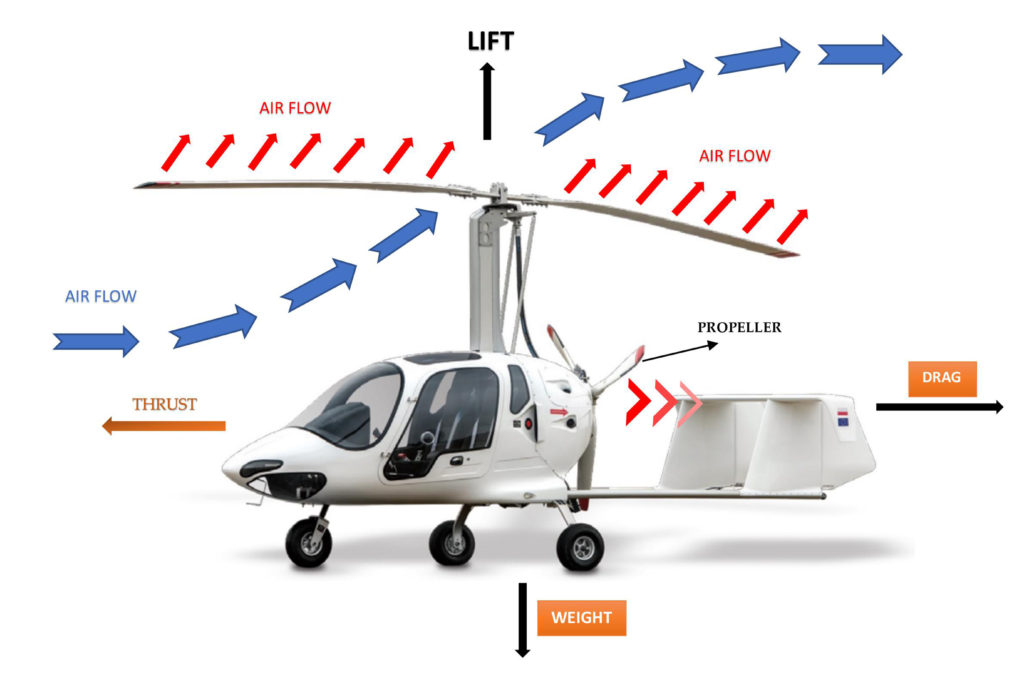
An autogyro, also known as a gyroplane, is a type of rotorcraft that uses an unpowered rotor in free autorotation to develop lift. Forward thrust is provided independently, by an engine-driven propeller.
While similar to a helicopter rotor in appearance, the autogyro's rotor must have air flowing across the rotor disc to generate rotation, and the air flows upwards through the rotor disc rather than down. Lift is provided by autorotation driven by air flowing up through the blades. Forward motion and the angle of the rotor blades forces the blades to turn and create lift. Therefore, higher forward speed results in more lift.
Due to the lack power to the rotor, the gyroplane cannot keep stationary while hovering as helicopters can. In fact, when forward speed decreases with nose up attitude, the airflow through the rotor decreases, and rotor rpm also slowly decreases, causing a reduction in lift. If the forward airspeed speed decays to zero, the gyroplane will descend. While descending, the air flow up through the blades will cause them to turn and maintain some degree of lift. This results in a constant speed descent (similar to autorotation in a helicopter).
Gyroplanes need a short take-off roll to get some forward speed. As forward speed increases, more air is force through the blades, the RPM of the rotor increases and the gyroplane lifts into the air. |